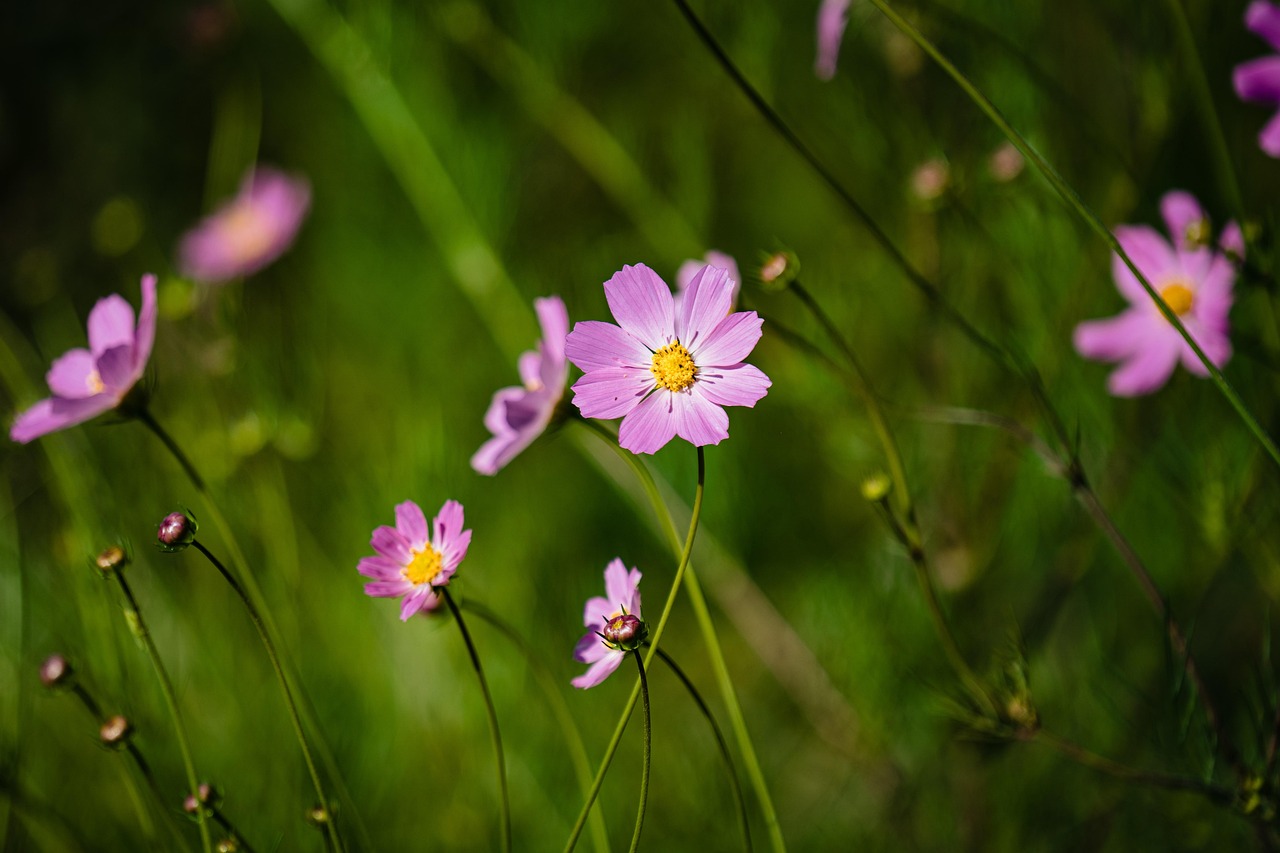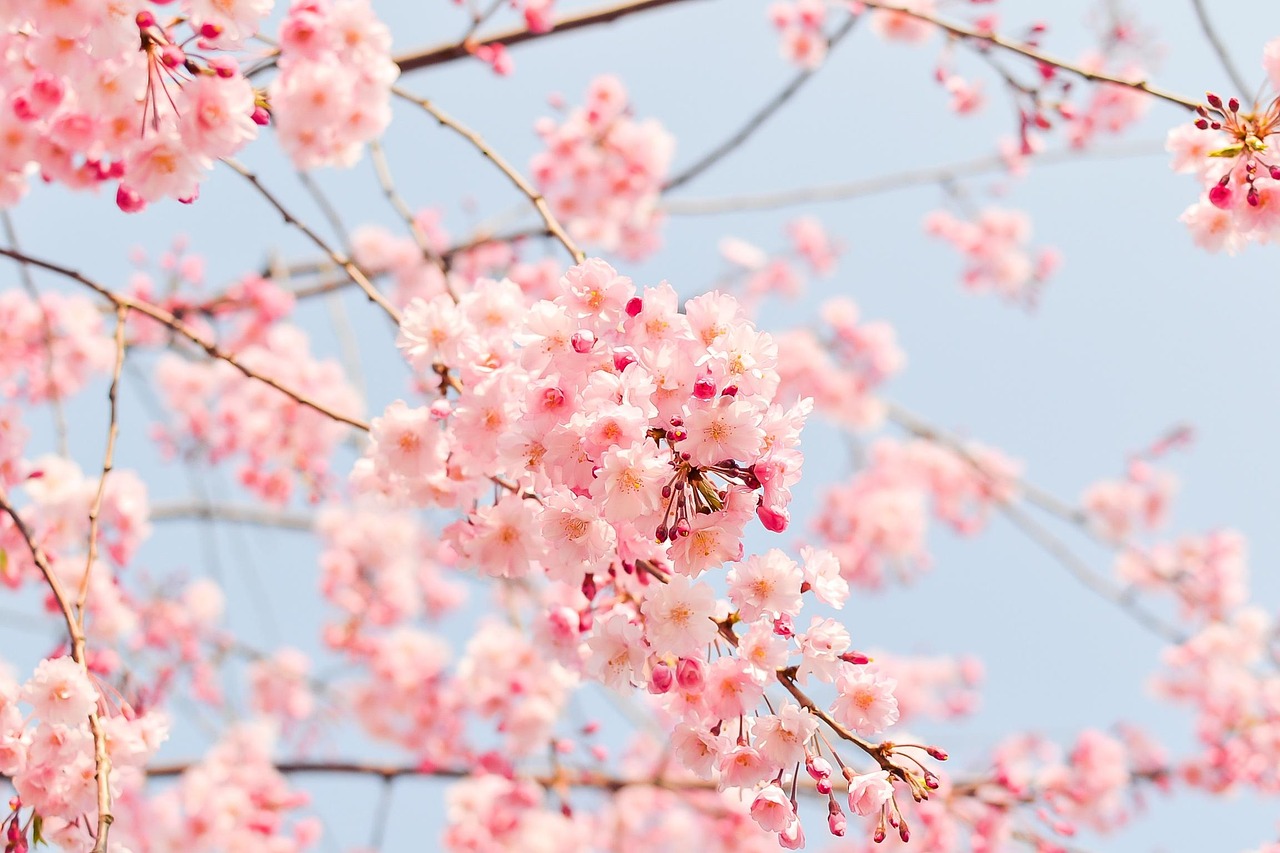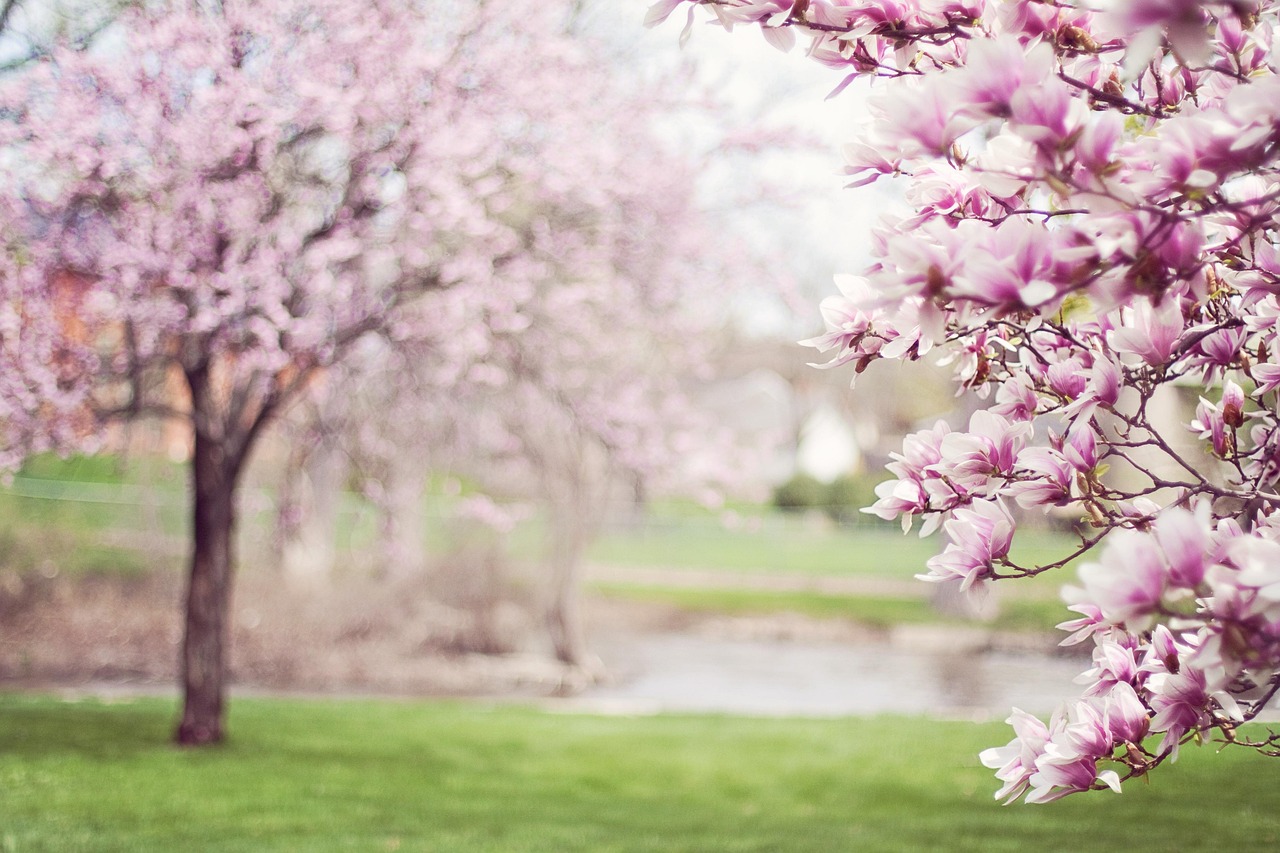Small pink flowering trees bring a touch of elegance and charm to any landscape. Their delicate blooms add color and beauty, making them an excellent choice for compact yards. These trees not only enhance the aesthetic appeal of a garden but also provide essential benefits such as shade and habitat for wildlife.
In urban settings where space is limited, the introduction of small flowering trees can transform outdoor areas into vibrant retreats. Many homeowners are looking for ways to maximize their gardens without sacrificing style. Pink flowering trees provide a perfect solution, combining beauty with functionality. With various species available, these trees can bloom in various shades of pink, offering options for every taste.

Additionally, small flowering trees are typically easier to maintain than larger varieties. They require less pruning and are often more resilient to pests and diseases. Their compact size makes them ideal for planting near patios, walkways, or as focal points in flower beds. Often, these trees are also suitable for container gardening, allowing even those with limited ground space to enjoy their beauty.
Popular Small Pink Flowering Trees
Several small pink flowering trees are favored by gardeners. Each species has its unique characteristics, growing requirements, and blooming periods. Here are some of the most popular options:
| Tree Name | Height | Bloom Period | Notable Features |
|---|---|---|---|
| Cherry Blossom | 15-25 feet | Spring | Famous for stunning pink blooms and fragrant flowers. |
| Redbud | 20-30 feet | Early Spring | Heart-shaped leaves and vibrant pink flowers along branches. |
| Crape Myrtle | 15-20 feet | Summer to Fall | Drought-resistant with long-lasting blooms in various shades of pink. |
| Flowering Dogwood | 15-30 feet | Spring | Beautiful white or pink bracts surrounding small flowers. |
| Saucer Magnolia | 20-30 feet | Late Winter to Early Spring | Large, tulip-shaped pink flowers that are show-stopping in appearance. |
When selecting a small pink flowering tree for your yard, consider factors such as climate, soil type, and sunlight exposure. Each tree has specific needs that must be met for optimal growth and blooming. Additionally, understanding the mature size of the tree is essential to ensure it fits well within your landscape design.
Another important aspect is the seasonal interest these trees provide. For instance, many of these species are not only beautiful when in bloom but also offer attractive foliage in the fall or interesting bark textures during winter months. This multi-season appeal enhances the overall beauty of your yard throughout the year.
Moreover, small pink flowering trees can attract various pollinators, including bees and butterflies. This is beneficial for the ecosystem and can contribute to a healthier garden environment. Planting these trees not only beautifies your space but also supports local wildlife.
Incorporating small pink flowering trees into your landscape can create stunning visual displays while remaining practical for smaller yards. With careful selection and proper care, these trees will thrive and provide joy for years to come.
Choosing the Right Location
When planting small pink flowering trees, choosing the right location is crucial for their growth and overall health. The site should provide adequate sunlight, space, and suitable soil conditions. Here are some guidelines to consider when selecting the perfect spot for your tree:
- Sunlight: Most small flowering trees thrive in full sun, which means they require at least six hours of direct sunlight each day. Ensure the selected area receives sufficient light, especially during the growing season.
- Soil Type: Well-draining soil is essential for the health of your tree. Conduct a soil test to determine pH and nutrient levels. Amend the soil as necessary to create optimal growing conditions.
- Space: Ensure there is enough space around the tree for its mature size. Consider both vertical and horizontal growth to avoid overcrowding with other plants or structures.
- Protection from Wind: Planting near a structure or larger trees can provide shelter from harsh winds. This is particularly important for younger trees that may be more vulnerable.
Planting Techniques

Once you have selected the right location, employing proper planting techniques is vital for establishing a healthy tree. Follow these steps for successful planting:
- Digging the Hole: Dig a hole that is twice as wide but no deeper than the root ball of the tree. This allows roots to spread easily into the surrounding soil.
- Preparing the Tree: Gently remove the tree from its container. If the roots are tightly bound, loosen them slightly to encourage growth.
- Positioning the Tree: Place the tree in the center of the hole, ensuring that the top of the root ball is level with or slightly above ground level.
- Backfilling: Fill the hole with native soil, breaking up any large clumps. Water thoroughly as you fill to eliminate air pockets.
- Mulching: Apply a layer of mulch around the base of the tree. This helps retain moisture and suppress weeds while regulating soil temperature.
Caring for Your Small Pink Flowering Trees

After planting, ongoing care is essential to ensure your small pink flowering trees flourish. Here are key aspects of tree care:
- Watering: Newly planted trees need regular watering, especially during dry spells. Water deeply at least once a week for the first growing season.
- Fertilizing: Apply a balanced fertilizer in early spring to provide essential nutrients. Be cautious not to over-fertilize as this can damage roots.
- Pruning: Prune your tree to remove dead or damaged branches and to shape its growth. Late winter or early spring is typically the best time for pruning.
- Pest Management: Keep an eye out for common pests such as aphids or spider mites. Regular inspections can help catch infestations early. Use organic methods where possible to control pests.
Seasonal Maintenance Tasks
Throughout the year, there are specific maintenance tasks that can help keep your small pink flowering trees healthy and beautiful.
- Spring: Inspect for any winter damage, apply mulch if needed, and start a regular watering schedule.
- Summer: Monitor water levels during hot spells and check for pests regularly.
- Fall: Rake and remove fallen leaves to prevent disease and prepare your tree for winter by wrapping young trunks if necessary.
- Winter: Protect your tree from extreme cold by mulching and ensuring it is well-watered before freeze events.
By following these guidelines on location selection, planting techniques, and care routines, you can ensure that your small pink flowering trees thrive in your yard, providing beauty and enjoyment for many years to come.

Common Varieties of Small Pink Flowering Trees
There are numerous varieties of small pink flowering trees that can enhance the beauty of compact yards. Each tree offers distinct characteristics, making them suitable for different landscapes and personal preferences. Below are some popular options that are often favored by gardeners:
1. Flowering Cherry (Prunus serrulata)
The flowering cherry tree is renowned for its stunning pink blossoms that create a spectacular show in spring. These trees typically reach heights of 15 to 25 feet and can thrive in various soil types, provided they are well-drained.
- Bloom Time: Early spring
- Features: Fragrant flowers and attractive foliage in fall
- Growth Rate: Moderate
2. Eastern Redbud (Cercis canadensis)
The Eastern Redbud is cherished for its heart-shaped leaves and vibrant pink flowers that appear before the leaves in early spring. This tree typically grows to about 20-30 feet, making it a perfect choice for smaller spaces.
- Bloom Time: Early spring
- Features: Unique leaf shape and seed pods after flowering
- Growth Rate: Moderate to fast
3. Crape Myrtle (Lagerstroemia indica)
Crape Myrtles are popular for their long-lasting blooms and attractive bark. They come in various sizes, but dwarf varieties can be as small as 15 feet, making them suitable for compact gardens.
- Bloom Time: Summer to fall
- Features: Beautiful peeling bark and vibrant pink flowers
- Growth Rate: Fast
4. Saucer Magnolia (Magnolia x soulangeana)
The Saucer Magnolia is known for its large, tulip-shaped flowers that bloom in stunning shades of pink. This tree generally reaches heights of 20-30 feet and is a favorite for its dramatic spring display.
- Bloom Time: Late winter to early spring
- Features: Large flowers and stunning appearance
- Growth Rate: Moderate
5. Flowering Dogwood (Cornus florida)
The Flowering Dogwood is another excellent choice for compact yards. It typically grows to about 15-30 feet and produces beautiful white or pink bracts that surround small flowers.
- Bloom Time: Spring
- Features: Attractive bark and fall color
- Growth Rate: Slow to moderate
Pest and Disease Management
While small pink flowering trees are generally resilient, they can still be susceptible to pests and diseases. Regular monitoring and early intervention can help maintain the health of your trees.
Common Pests
Some common pests that may affect these trees include:
- Aphids: Small insects that feed on sap, leading to yellowing leaves.
- Spider Mites: Tiny pests that can cause stippling on leaves and webbing.
- Scale Insects: These pests attach themselves to the bark, sucking sap and weakening the tree.
Disease Prevention
Diseases can also pose a threat to flowering trees. Here are a few tips for prevention:
- Proper Watering: Avoid overwatering, which can lead to root rot.
- Good Air Circulation: Space trees appropriately to allow air flow, reducing humidity around foliage.
- Pest Control: Use organic insecticides or horticultural oils when necessary to manage infestations.
By being proactive about pest and disease management, you can ensure your small pink flowering trees remain healthy and vibrant throughout the seasons.
Enhancing Landscape Design with Small Pink Flowering Trees
In addition to their beauty, small pink flowering trees can significantly enhance the overall landscape design of compact yards. They serve various purposes beyond mere aesthetics, making them a valuable addition to any garden. Here are some ways to incorporate these trees effectively into your outdoor space:
Creating Focal Points
Small pink flowering trees can act as stunning focal points in your garden. By strategically placing them in prominent locations, you can draw attention and create a visually appealing landscape. Consider the following:
- Plant a flowering cherry tree near the entrance of your yard to greet visitors with a burst of color.
- Use an Eastern Redbud as a centerpiece in a flower bed, surrounded by contrasting colors from other plants.
- Position a Crape Myrtle near a patio or seating area to enjoy its beauty up close during summer evenings.
Complementing Other Plants
When integrated thoughtfully, small pink flowering trees can complement other plants and enhance the overall garden theme. Consider planting them alongside:
- Perennials: Combine with colorful perennials like daylilies or peonies for a vibrant display.
- Ground Covers: Use low-growing ground covers to create a lush carpet beneath the trees.
- Shrubs: Pair flowering trees with shrubs that have contrasting foliage or flowers for added interest.
Providing Seasonal Interest
Small pink flowering trees offer seasonal interest that can keep your yard looking vibrant throughout the year. Their beauty is not limited to flowers alone; many species boast attractive foliage, bark, and form. Here’s how they contribute to your garden across seasons:
- Spring: The blooming period brings a spectacular show of pink flowers.
- Summer: Many trees provide shade and continue to offer vibrant green leaves.
- Fall: Some species exhibit brilliant fall foliage, adding warmth and color.
- Winter: Unique bark textures can add interest during the colder months when most plants are dormant.
Final Thoughts
Small pink flowering trees are not merely decorative elements; they are versatile assets for compact yards. Their beauty, combined with functional benefits such as shade and wildlife habitat, makes them an excellent choice for gardeners seeking elegance in limited spaces. By selecting the right species, ensuring proper care, and integrating them thoughtfully into your landscape, you can create a stunning outdoor environment that changes beautifully with the seasons.
Remember to consider factors like sunlight, soil type, and maintenance needs when choosing your trees. With the right planning and care, these enchanting trees will flourish and enrich your garden for years to come. Embrace the delicate beauty of small pink flowering trees, and let them transform your compact yard into a vibrant oasis.
Your journey into gardening with small pink flowering trees will not only enhance your landscape but also provide you with joy and satisfaction as you watch them grow and thrive.
